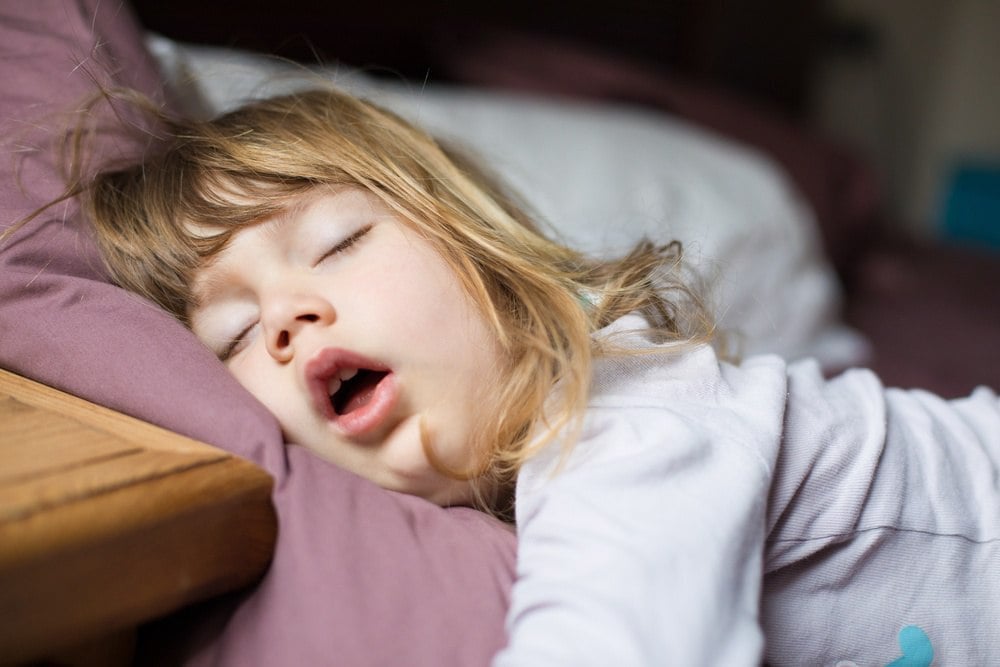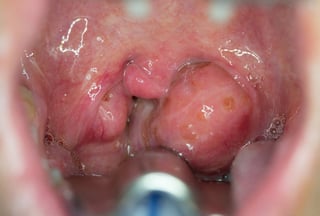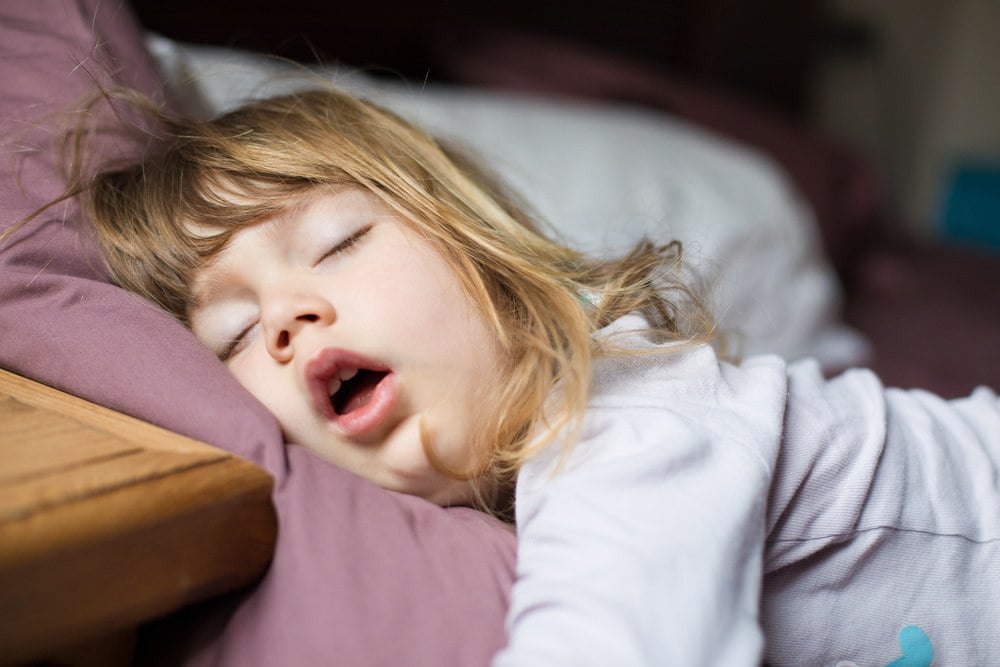Sleep Apnea in Children: Signs, Symptoms, and Causes
October 10th, 2017 | 6 min. read

Many people think that sleep apnea is only a condition that affects adults, particularly overweight, middle-aged individuals. However, sleep apnea also occurs in children.
According to the National Sleep Foundation, one sleep-related breathing condition that affects over 18 million people in the U.S., including two to three percent of children of all ages is obstructive sleep apnea (OSA). OSA runs in families and occurs more in children with enlarged tonsils and adenoids (lymph nodes behind the nose and in the throat). OSA is one of the top 10 reasons why children are evaluated by our ENT doctors throughout Houston, Texas.
As a parent, you should known that doctors often diagnose children who have sleep apnea with a different disorder, such as Attention Deficit Hyperactivity Disorder (ADHD), since the children don't conform to the common patient profile. For example, a pediatric patient with sleep apnea may present with symptoms of hyperactivity, whereas an adult with the condition is overly tired.
get your child evaluated today for sleep apnea
Schedule an appointment today at one of our 10 convenient locations in Houston, Texas, to get your child evaluated for sleep apnea.
Differences Between Children's Sleep Apnea and Adults
Pediatric patients with OSA typically show symptoms different from adults. Children might have a paradoxical effect from poor-quality sleep that's secondary to obstructive sleep apnea (i.e. they're hyperactive) whereas adults experience fatigue. Pediatric patients might show sternal retractions (while breathing breastbone draws in toward chest) with increased effort to breathe whereas adults might show pauses in breathing and loud snoring.
Studies suggest that nearly 25 percent of children who received a diagnosis of ADHD might actually have symptoms of OSA. Therefore, much of their behavior problems and learning difficulty stems from their chronic fragmented sleep.
Signs of Sleep Apnea in Children
Do you notice if your child snores? Are they also showing other signs of sleep disturbance such as:
-
Tossing and turning in bed.
-
Long pauses in breathing.
-
Night sweats.
-
Chronic mouth breathing while sleeping
These, particularly the snoring, are potential signs of sleep apnea in children.
Symptoms of Sleep Apnea in Children
If you find yourself worrying and thinking that your child's sleeping difficulties are potentially a sleep apnea sign, keep an eye out for certain symptoms. Some symptoms occur at night while they're sleeping; others during the day.
Loud snoring is the most obvious symptom of OSA and usually occurs in the night during your child's sleep. Around 10 percent of kids who snore are suffering from sleep apnea.
Behaviors such as snorting and gasping noises with a total blockage of breathing that result from sleep awakenings may interrupt their snoring.
Since your child isn't getting good quality sleep because of their sleep disorder, they may be sleepy during the day, irritable or have trouble concentrating in school. They may also exhibit hyperactive or busy behavior.
Causes of Snoring
When your child dozes off and progresses from a lighter sleep to a deeper sleep, the muscles of their soft palate (muscles in the roof of their mouth), throat, and tongue relax. Their throat tissues may relax enough where they vibrate and partially block your child's airway. And, as their airway begins narrowing, the airflow becomes more forceful causing an increase in the tissue vibration and thereby making their snoring louder.
Take note that snoring doesn't necessarily indicate OSA or sleep apnea in your child. There are other causes of snoring and ailments that affect your child's airway that lead to snoring. Your child's pediatrician should and likely will rule out these other factors including:
Nasal Problems
A deviated nasal septum (crooked partition between your child's nostrils) or chronic nasal congestion could contribute to their snoring.
Mouth Anatomy
A thick, low soft palate may narrow their airway. If your child is overweight, they might have extra tissues in their throats (in the back) that could cause their airway to narrow. Also, if the piece of tissue (triangular) that hangs from their uvula (soft palate) is extended, it can obstruct their airflow and increase vibration.
Sleep Position
If your child sleeps on their back, they're more likely to snore loudly and frequently since sleeping on the back causes a gravity effect on their throat narrowing their airway.
Sleep Deprivation
Your child isn't getting enough sleep leading to more throat relaxation.
If your child's snoring accompanies any of these symptoms below, it could be sleep apnea and you should set up an appointment with their pediatrician for a thorough exam.
Other symptoms of sleep apnea in children may include:
-
Gasping, snorting, pausing or stopping their breathing altogether (gasps or snorts wake them up and disrupt their sleep).
-
Heavily sweating while they sleep.
-
Sleeping in abnormal positions, positioning their head in unusual ways or being restless
Daytime sleep apnea symptoms may include:
-
Being difficult to wake up.
-
Having social, behavioral and school problems.
-
Being agitated, cranky, irritable and aggressive.
-
Having headaches during the day, particularly mornings.
-
Breathing through their mouth regularly or speaking with a nasal voice.
-
Being especially sleepy during the day that makes them daydream or fall asleep.
Disruptions in sleep may cause your child to sleep lightly. They may experience a pattern of breathing pauses they repeat frequently during the night. Their breathing may slow or stop at least five times each hour of sleep.
A study revealed that children with OSA had higher rates of behavioral issues characteristic of attention deficit disorder (ADD) and attention deficit hyperactivity disorder (ADHD).
Causes of Sleep Apnea in Children
Enlarged tonsils and adenoids are the leading cause of obstructive sleep apnea in children. These are your child's first line of  defense that helps their immune system do its work. They sample viruses and bacteria trying to enter your child's body through their nose or mouth, but they can become infected.
defense that helps their immune system do its work. They sample viruses and bacteria trying to enter your child's body through their nose or mouth, but they can become infected.
When their tonsils and adenoids become infected, they can cause more harm than good by potentially causing repeated bacterial infections or airway obstructions. Your child's Houston ENT & Allergy Services doctor can recommend the best treatments for your child.
With enlarged tonsils and adenoids, while your child sleeps, their muscle tone decreases and can affect their airway and breathing. While your child may not struggle to breathe while they're awake, during sleep when their muscle tone decreases, their airway shrinks causing their tonsils and adenoids to block their airway. This makes airflow more difficult and causes your child to breathe harder.
Undiagnosed and untreated sleep apnea can contribute to behavioral problems and daytime fatigue at school. A published study in the American College of Chest Physicians CHEST journal reported that kids who snore loudly were two times as likely to have problems with learning. After a night of poor quality sleep, kids are more likely to have troubles paying attention and be hyperactive; also signs of ADHD. Apnea could also be linked to cardiovascular problems and delayed growth.
The sooner enlarged tonsils and adenoids are identified and treated (usually with tonsil adenoidectomy or T&A), the better. Tonsillectomy adenoidectomy is a type of surgery where the surgeon removes your child's tonsils and adenoids.
If left untreated for an extended period of time, it could cause more malformations like retrognathia in your child's upper airway, further complicating their airway. OSA tends to run in families. Children are at greater risk of developing OSA if they have enlarged tonsils and adenoids.
Other factors include being:
-
Having a midface or small jaw.
-
Having a tongue that's larger-than-usual.
-
Being obese.
-
Being exposed to tobacco smoke.
-
Having less tone in the muscles (i.e. kids with cerebral palsy, Down syndrome or neuromuscular disorders).
Also worth mentioning is the rapid increase in the number of pediatric obesity cases over the last 20 years. These cases have led to significant changes in anthropometric and cross-sectional demographic characteristics of kids who are being evaluated for habitual snoring.
While only 15 percent of children who habitually snored were obese in the early 1990s, over 50 percent met criteria for suspected OSA in the past few years in various sleep centers.
Getting Evaluated and Treating Sleep Apnea in Children
Your child's pediatrician or ENT physician may recommend tonsillectomy adenoidectomy (T&A) if your child is experiencing recurrent infections even after going through antibiotic therapy or they have enlarged tonsils and adenoids that make it difficult for them to breathe leading to them to have sleep apnea.
T&A lasts around 30 to 45 minutes and is an outpatient surgical procedure. Your child will receive general anesthesia and will most likely stay at the clinic or hospital for a few hours for observation after their surgery. Children with severe OSA or children who are very young generally stay in the hospital overnight so hospital staff can monitor their respiratory status. Your child may also stay overnight if they're experiencing complications like severe vomiting, excessive bleeding, or low oxygen saturation.
Children usually take between seven 10 days to recover from their surgery. Some may take up to two weeks.
Some younger children outgrow their OSA when their throats become larger and their airways begin to stiffen. But, this doesn't happen as much as most people would like. Even though there are multiple diagnoses in kids, once the doctor has come up with a diagnosis and determines the severity of your child's sleep apnea, they can start your child on a treatment plan.
If your child has been diagnosed with OSA or you suspect your child has sleep apnea, make an appointment with us here at Houston ENT & Allergy Services for an evaluation.
Other Articles related to children and sleep apnea
TOP 10 SIGNS AND SYMPTOMS OF SLEEP APNEA IN CHILDREN
SLEEP APNEA IN CHILDREN: TREATMENT OPTIONS
ADHD AND CHILDREN WITH SLEEP DISORDERED BREATHING (SLEEP APNEA)
ENURESIS (BED WETTING) IN CHILDREN: COMMON CAUSES AND REASONS
WHAT IS A DEVIATED NASAL SEPTUM? (SIGNS, SYMPTOMS, AND CAUSES)
ENLARGED ADENOIDS AND SLEEP APNEA
WHAT IS A TONSILLECTOMY AND ADENOIDECTOMY (T&A)?
Dr. Martin is double boarded in Otolaryngology as well as Sleep Medicine and the only otolaryngologist to be board certified in Sleep Medicine in Fort Bend County.
Topics:


